Force and Distance - Definition, Facts, Example, Quiz, Trivia
Discover how force and distance work together to make objects move!
What is Force?
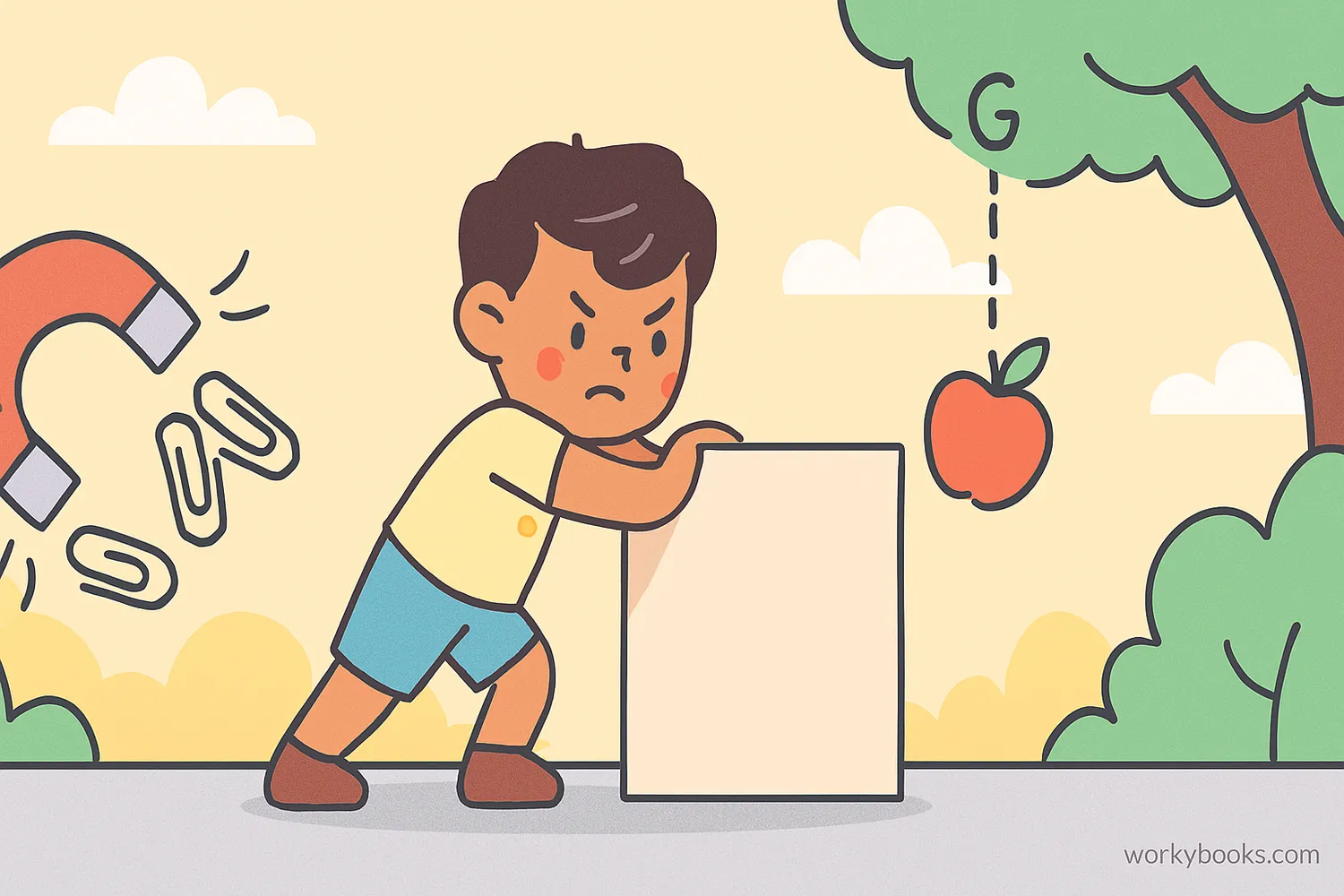
Force is simply a push or a pull. When you push a door to open it or pull a wagon, you're using force. Forces can make objects:
Start moving - like kicking a soccer ball
Stop moving - like catching a baseball
Change direction - like hitting a tennis ball with a racket
Change shape - like squeezing clay
Force is measured in units called Newtons (N). One Newton is about the force needed to hold up a small apple against Earth's gravity.
Did You Know?
Sir Isaac Newton described how forces work with his three laws of motion over 300 years ago!
What is Distance?
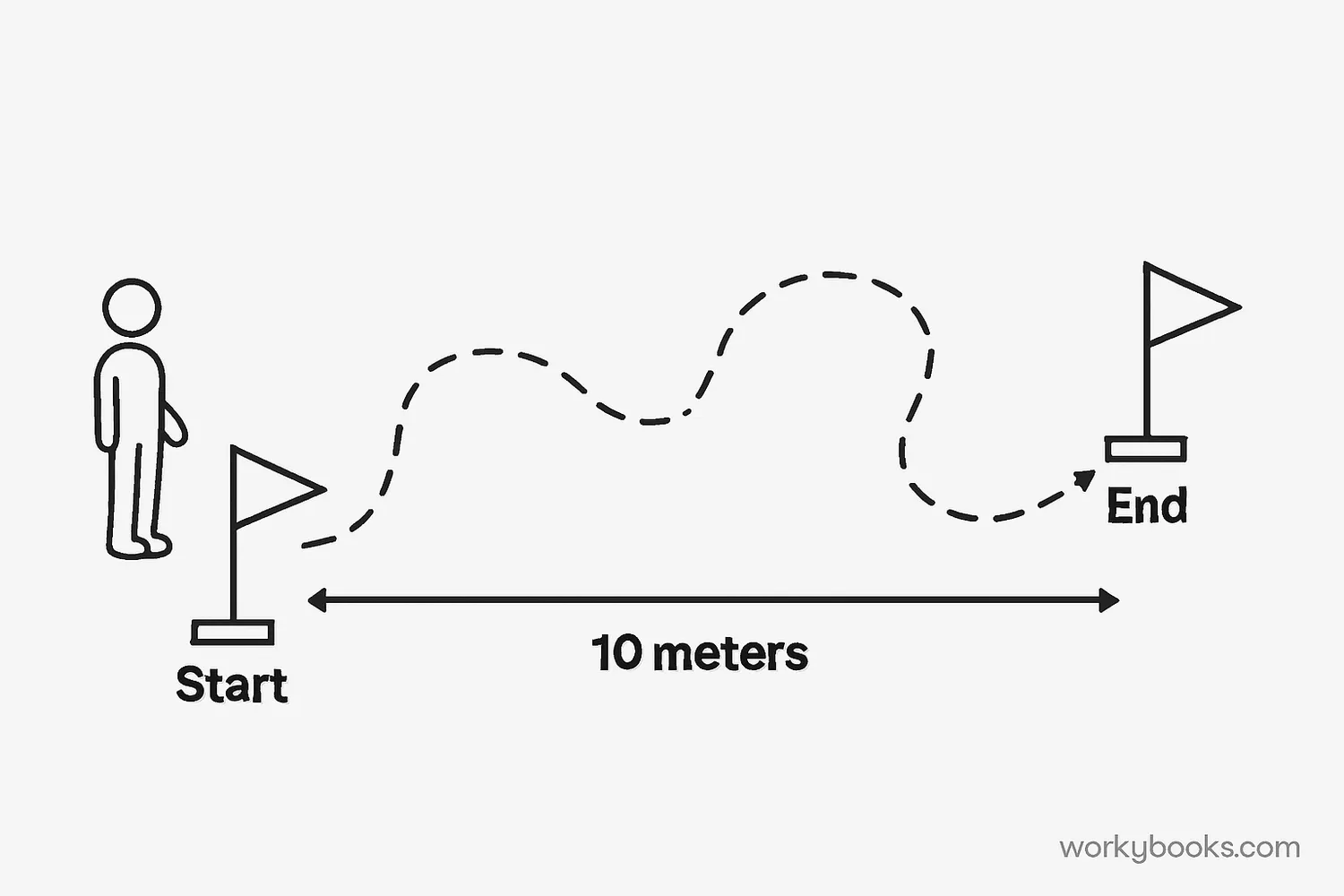
Distance is how far an object moves from its starting position to its ending position. It tells us the length of the path traveled. We measure distance in units like:
Centimeters (cm) - good for small objects
Meters (m) - good for room sizes
Kilometers (km) - good for longer distances
In science, we often measure distance in meters. When we talk about work in physics, we're interested in the distance an object moves in the direction of the force.
Starting Point
Where the object begins its motion
Path Traveled
The route the object takes
Ending Point
Where the object stops
What is Work?
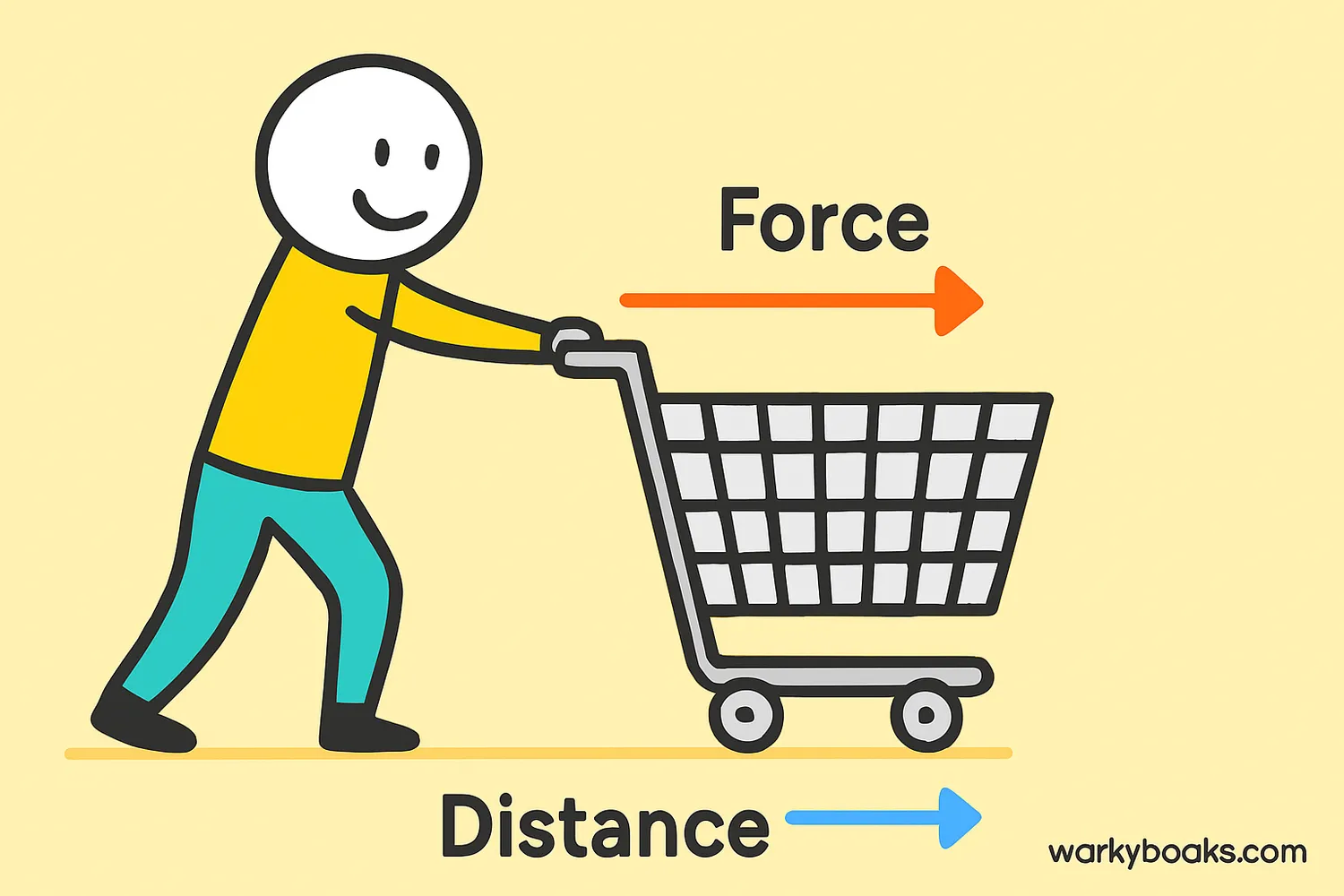
In science, work has a special meaning. Work is done when a force makes an object move in the direction of the force. If you push against a wall and it doesn't move, you might get tired, but in scientific terms, you haven't done any work!
Two things must happen for work to be done:
1. A force must be applied to an object
2. The object must move in the direction of the force
Work is measured in Joules (J). One Joule equals the work done when a force of 1 Newton moves an object 1 meter.
Example
If you push a box with a force of 10 Newtons and it moves 5 meters, how much work did you do?
Work = Force × Distance = 10 N × 5 m = 50 Joules
Force-Distance Graph
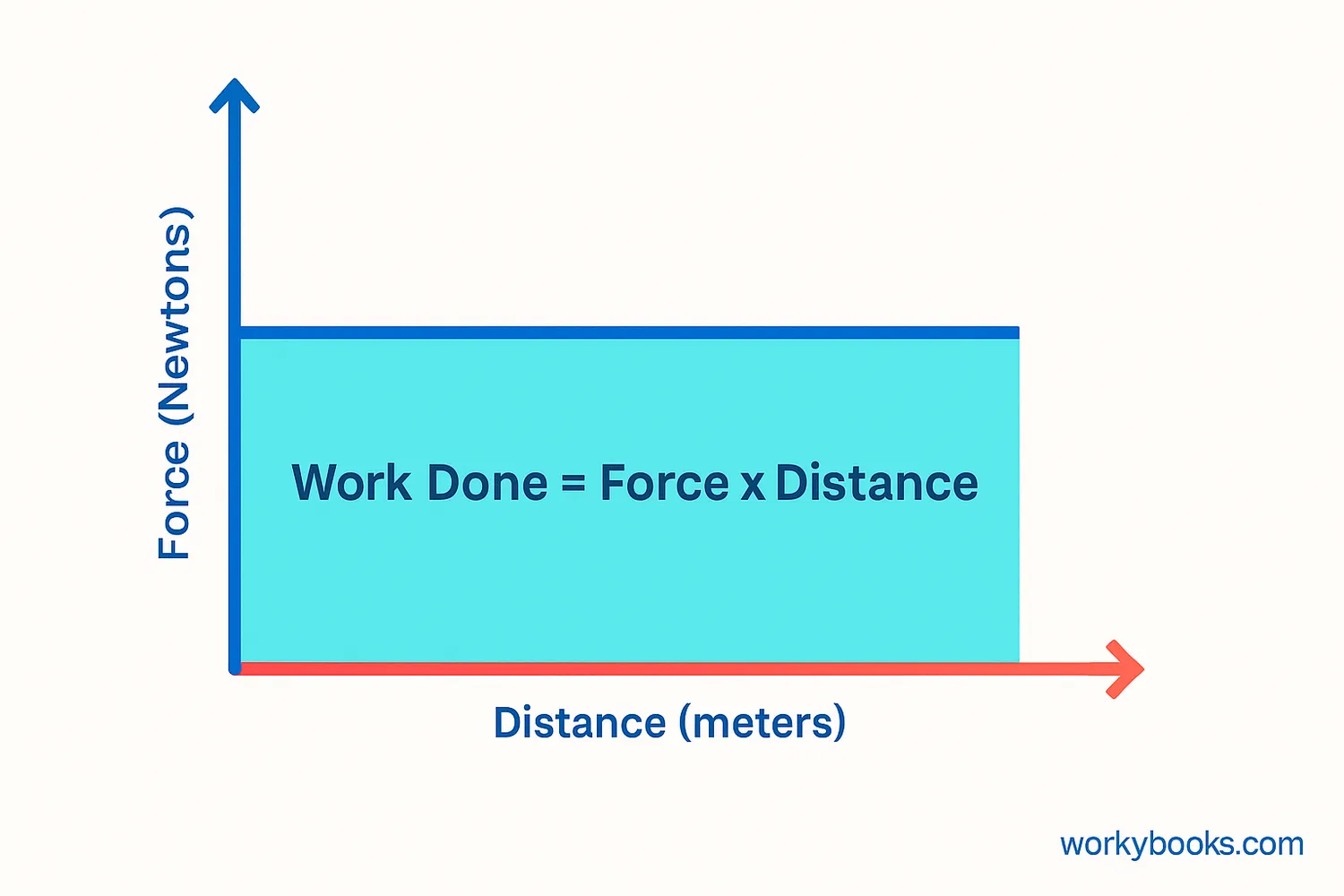
Scientists and engineers often use graphs to show the relationship between force and distance. A force-distance graph has:
Distance on the horizontal (x) axis
Force on the vertical (y) axis
The area under the line on the graph represents the work done. For a constant force, the graph is a horizontal line, and the work equals the area of the rectangle (force × distance).
In this example graph, the constant force of 60 N is applied over 5 meters. The work done would be 60 N × 5 m = 300 J. The blue rectangles show this calculation visually.
Calculating Work from a Graph
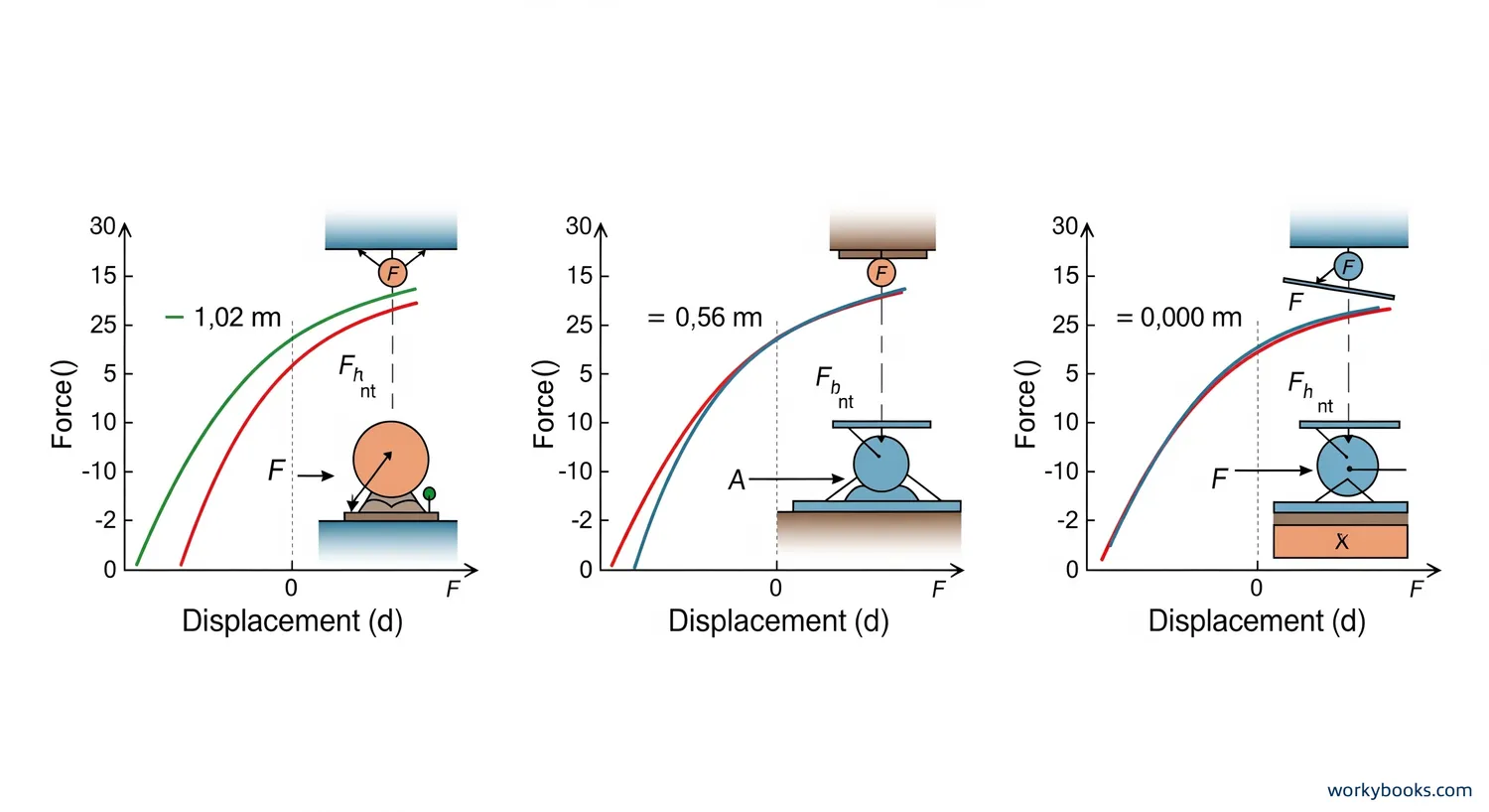
To calculate work from a force-distance graph, we find the area under the line. This might sound complicated, but it's just like finding the area of shapes!
For different types of graphs:
Constant Force
Area = Force × Distance (a rectangle)
Changing Force
Area = ½ × Base × Height (a triangle)
Complex Shapes
Break into rectangles and triangles
Example
If a graph shows a force that starts at 20 N and decreases to 0 N over 4 meters, how much work is done?
This forms a triangle: Area = ½ × Base × Height = ½ × 4 m × 20 N = 40 Joules
Force and Distance Quiz
Test your knowledge with this quiz! Answer all 5 questions to see how much you've learned about force, distance, and work.
Frequently Asked Questions
Here are answers to some common questions about force, distance, and work:
Science Trivia
Discover some amazing facts about force and distance!
Space Work
In space, astronauts can move massive objects with very little force because there's no gravity or friction to overcome. However, they still need to be careful because Newton's laws still apply—for every action, there's an equal and opposite reaction!
Ant Strength
An ant can lift up to 50 times its body weight! If a human could do that, they'd be able to lift a small car. This amazing strength relative to size is due to their small body mass and specialized muscle structure.
Energy Conversion
The food you eat provides energy that your body converts into mechanical work. On average, your body is about 25% efficient at converting food energy into physical work—the rest is released as heat!
Ancient Machines
Simple machines like levers, pulleys, and ramps were used by ancient Egyptians to build pyramids. These machines don't reduce the amount of work needed, but they allow us to use less force over a greater distance.


